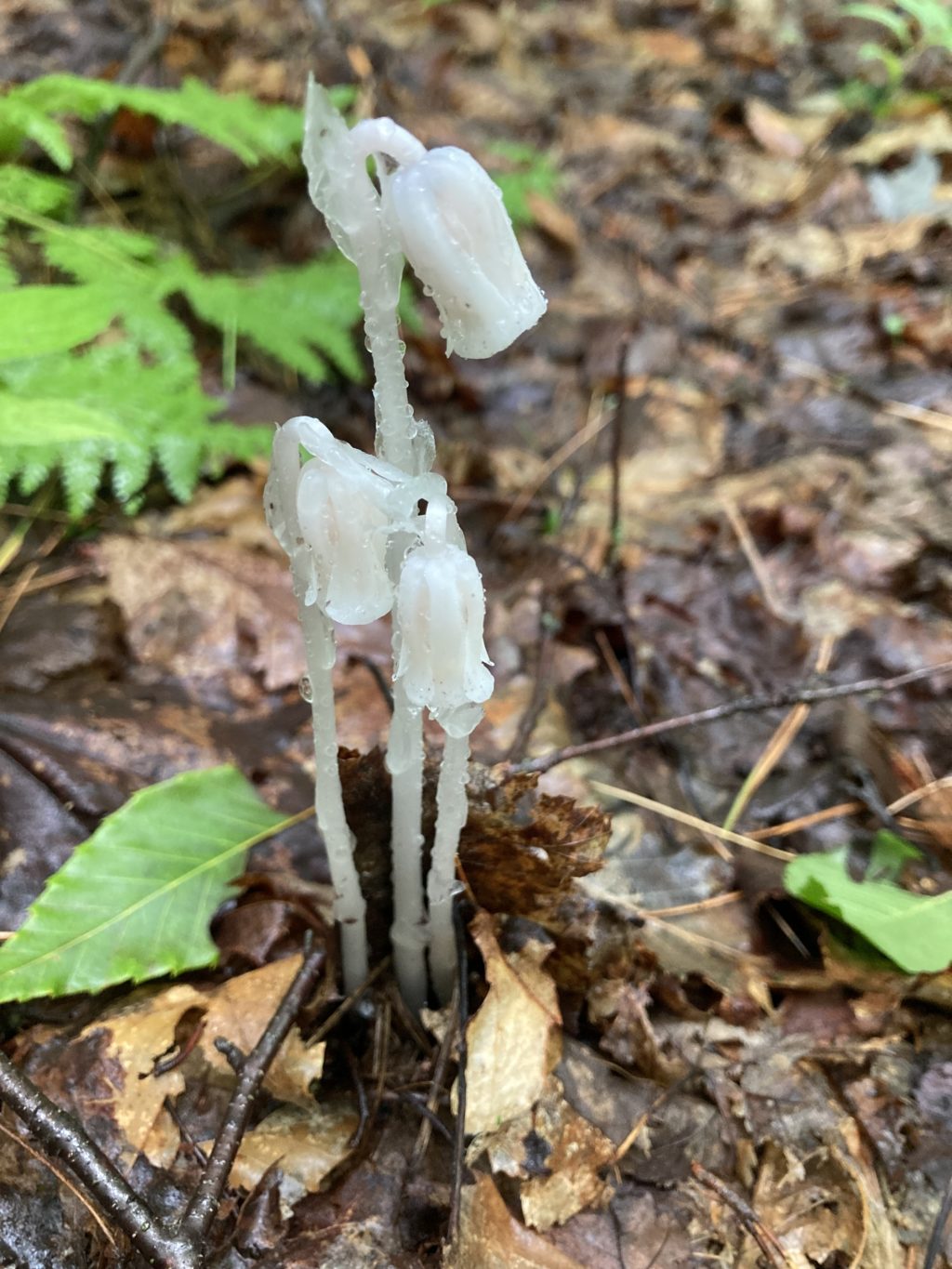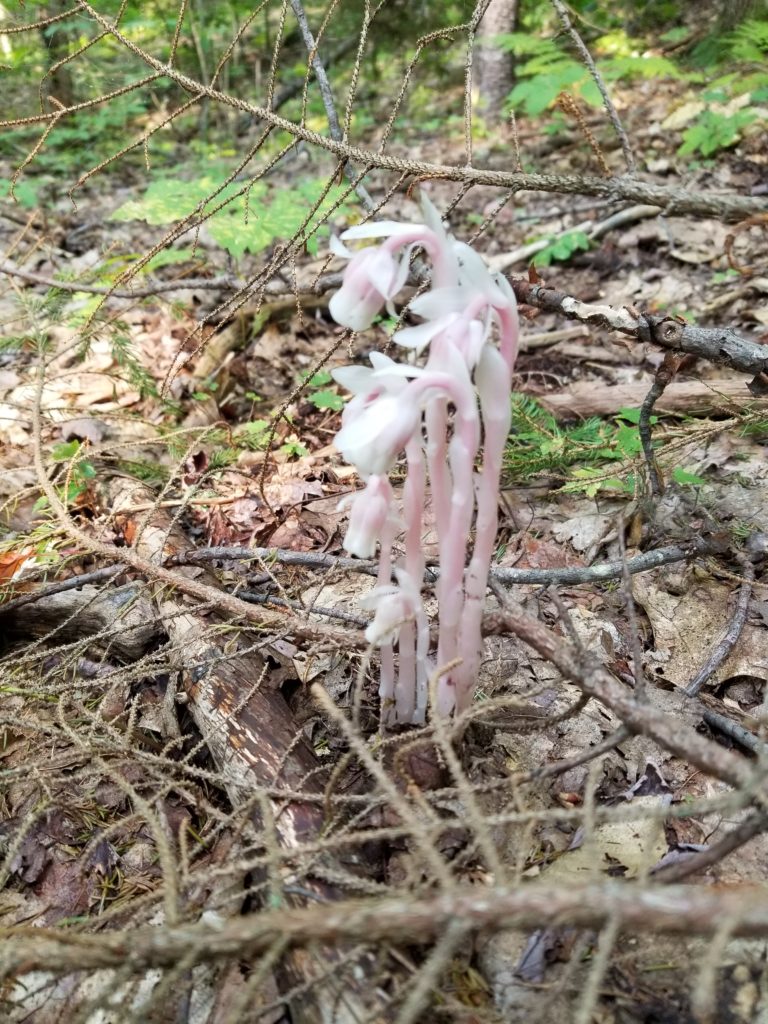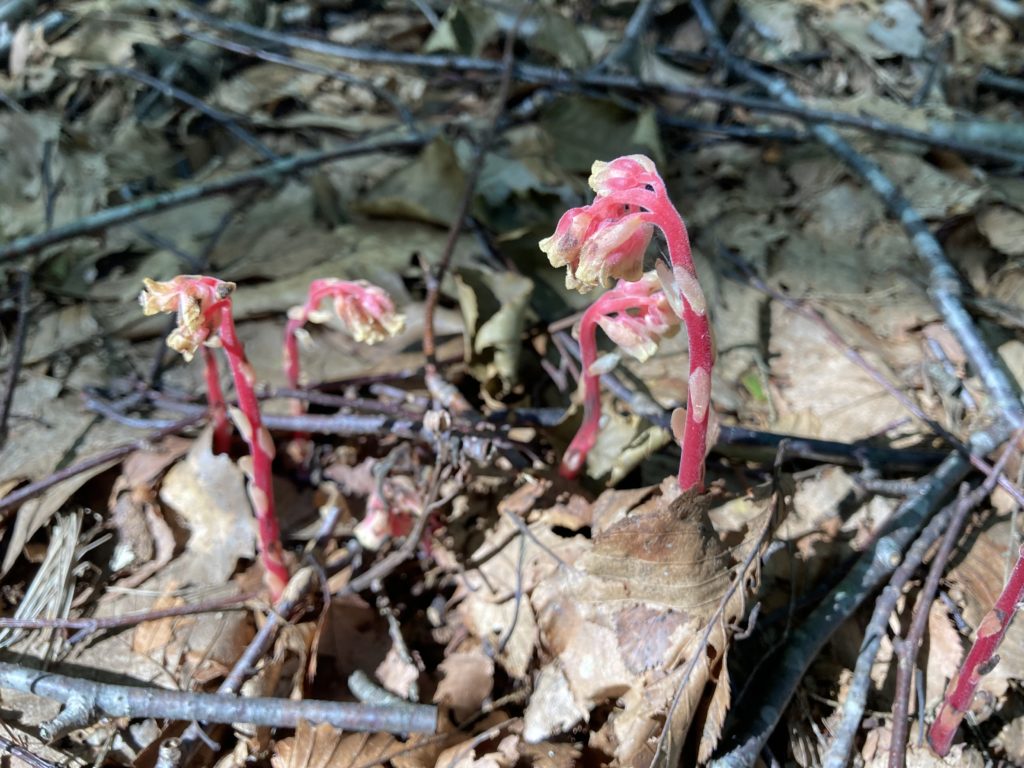Almanac: Ghost Plant

Indian Pipe (Monotropa uniflora) in its usual all-white form. Photo: Stephen Braun
All summer long, as I’ve been traipsing through woods, both locally and in more remote areas, I’ve been seeing the distinctive all-white stems of Indian Pipe emerging from the forest floor. For a long time I never paid much attention to these rather odd organisms—I assumed they were a kind of fungus because they were white, like a lot of mushrooms, and popped up suddenly after a spell of wet weather, when many other fungi appeared.
But as my interest in actual fungi grew, I became curious about Indian Pipe—it didn’t appear in any fungi field guides. It turns out that these plants are much stranger than I thought. First of all, they really are seed-bearing flowering plants. Somewhat bizarrely, they are members of the heath family of plants, which includes blueberries, cranberries, rhododendron, and azaleas.
Indian Pipe stems, which are covered by soft, scale-like vestigial leaves, push through the soil from late spring to early fall, usually after a rainy period. At first the flower heads point down, forming the upside-down pipe-like shape from whence the common name derives. But after being fertilized by insects, the flower turns upward (the plant’s genus name is Monotropa, meaning “one turn”) and it remains erect for another week or so before turning brown and withering.
Indian Pipe is white because it lacks chlorophyll—which is a defining characteristic of fungi. So what gives? If these really are plants, not fungi, where do they get their energy? The answer, somewhat ironically, is from fungi. Indian Pipe roots twine tightly around the underground networks of very fine filaments (mycelia) of several species of russula mushrooms, which include the rosy russulas common in the woods around here. The mycelia of the russula fungi, in turn, are enmeshed with the roots of nearby trees, from which they draw carbohydrates and other nutrients.
Indian Pipe, therefore, is twice-removed from photosynthesis. Unable to produce its own food it parasitizes fungi, which also can’t produce food, but which can suck nutrients from the roots of trees that can. This complicated arrangement means that it’s difficult for Indian Pipe to reproduce: the seeds have to germinate in just the right spot—namely in soil already colonized by the russula mycelia. Once established, however, Indian Pipe is ideally adapted to the dense shade of the forest floor and can easily out-compete other plants dependent on sunlight.
It’s likely that Indian Pipe evolved from a photosynthesizing heath family plant that became efficient at tapping into the resources of nearby mycelia. The ancestor plant became so adept at stealing carbohydrates from the fungus that it no longer needed all of the complicated (and energy-intensive) molecular machinery of photosynthesis, in a process similar to that leading to the disappearance of eyes in some cave-dwelling creatures. In nature, if you don’t use it, you lose it.
Although Indian Pipe is typically all-white (another common name is “ghost plant”) you can occasionally find specimens that display varying shades of pink.

On a walk along the trails in the Mt. Warner reservation in Hadley recently, I saw what I first thought was Indian Pipe of a particularly vivid hue. On closer inspection, however, I realized these plants had several flower heads on each stem, rather than Indian Pipe’s solitary flowers.

I was looking at Pine Sap, a close relative of Indian Pipe that is also a two-stage-parasite. Early in the blooming season, pine sap tends to be a pale yellow color, but in late summer and early fall the stems and flowers are usually infused with bright pinks or reds, as seen in the photo. Although both the common and species names of this plant associate it with pine (hypopitys means “under pine”), it does not require the presence of pine trees—in fact I’ve only ever seen them in hardwood forests.
If you see either of these remarkable organisms out in the woods, stop and take a close look at the flowers, which have some lovely details in the arrangements of anthers around the central stigma. The plants are beautiful in their own right, but they’re also a visual reminder of the vast, invisible networks of mycelia that serve such vital roles in the health of ecosystems worldwide.
Almanac is a regular Indy column of observations, musings, and occasional harangues related to the woods, waters, mountains, and skies of the Pioneer Valley. Please feel free to comment on posts and add your own experiences or observations.

Well, that was totally unexpected info!